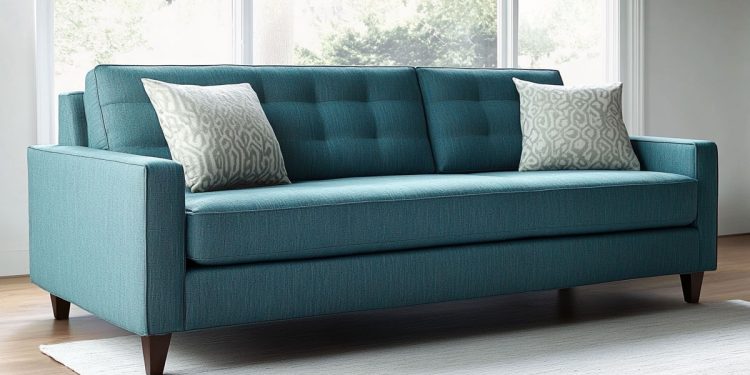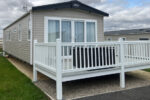The Only Buying Guide You Need For Choosing The Right Sleeper Sofa

Picking out a sleeper sofa is a balancing act—comfort, style, practicality, all need to line up for your space. With so many choices out there, it can feel like a bit much to sift through mattress types, sizes, and random features.
Think about how often you’ll actually use it for sleeping, how much room you’ve got, and what feels comfortable to you.
Don’t worry if this sounds overwhelming – this guide will help you in the process of finding your dream sleeper sofa.
What To Think About When Buying a Sleeper Sofa
There’s a lot more to choosing a sleeper sofa than just picking the first one that looks good. You’ll want to weigh things like type, mattress material, size, and how easy it is to switch from sofa to bed. It’s worth thinking it all through before you buy.
Types of Sleeper Sofas
Sleeper sofas aren’t all built the same. The usual suspects are pull-out sleeper sofas, futons, daybeds, and sectional sleepers.
Pull-out sleepers have a mattress tucked inside—pretty classic, and they’re solid for regular use. Futons are straightforward: just flatten the backrest and you’re set, though they’re not always the plushest. Daybeds sort of straddle the line, working as a sofa or a single bed, and they’re great for tight spaces or guest rooms.
Sectional sleepers are the big guns—lots of seating, lots of sleeping room, but you’ll need the space for them. It’s really about what fits your needs and your floor plan.
Mattress Materials and Comfort
The mattress is where the magic—or the misery—happens. Most sleeper sofas use innerspring, memory foam, or air-over-coil mattresses.
Innerspring mattresses are supportive, sometimes a little too firm, and they can sag as time goes on. Memory foam is quieter, hugs your body, and is usually better if you’re a light sleeper. Air-over-coil types let you tweak the firmness, but yeah, you’ll need to inflate them.
They’re all thinner than a regular mattress—most are about 4 to 5 inches thick. If you’re picky or have back issues, memory foam might be your friend. Think about who’s sleeping on it and how often, then match the material to your comfort level.
Size and Space Requirements
It’s very important to make sure you actually have enough room for your sleeper sofa, especially when it’s in use and not folded up like a regular sofa.
Double-check width, depth, and height, and leave at least 18–24 inches in front so you can actually unfold the bed.
Got guests often? Go for a full or queen. Just need something for the occasional visitor? A loveseat or twin works. Seriously, grab a tape measure and sketch it out—it saves a lot of headaches.
Ease of Conversion
If turning your sofa into a bed is a workout, you’ll probably avoid using it.
Pull-out mechanisms should be easy to use, so make sure to test these out before buying.
Futons and daybeds are the easiest: just push the backrest down or adjust a cushion. Pull-outs and sectionals can be a bit more involved, especially if you have to remove covers or pillows first.
Look for things like:
- Frames that don’t wobble or stick
- Locking parts so it doesn’t surprise you in the middle of the night
- Instructions you don’t need a PhD to understand
Features, Styles, and Maintenance
Sleeper sofas come in all sorts of styles, fabrics, and builds—which means comfort, durability, and cleaning are all up for grabs. The right combo can make your sofa bed blend in or stand out, and it’ll affect how much work you’ll put into keeping it looking good.
Popular Designs and Upholstery Options
The main designs are the familiar pull-out sofas, futons, and convertible sectionals. Pull-outs usually come with innerspring or memory foam mattresses, so they feel more like a regular bed. Futons are the quick-change artists—fold them flat and you’re done, though the mattress is thinner and attached.
Upholstery? You’ve got fabric, leather, faux leather, and microfiber. Fabric (like linen or cotton blends) is breathable, comes in endless colours and prints, and feels cosy. Leather’s tough and ages nicely, but it’ll cost you and needs the right care. Microfiber is a lifesaver if you’ve got kids or pets—soft, stain-resistant, and low-fuss.
The design and fabric you pick will change the vibe, size, and upkeep. Think about what fits your space and your style—don’t be afraid to go with your gut.
Durability and Frame Quality
The frame’s doing all the heavy lifting. Kiln-dried hardwood (like oak or maple) is the gold standard—resists warping and just lasts. Metal frames are common for the bed mechanism, and they should feel solid, not flimsy or awkward to move.
How the joints are put together matters: mortise-and-tenon or dowel joints are much sturdier than just staples or nails. Cushion quality is another thing to watch—high-resilience foam keeps its shape way longer, while cheap foam flattens out fast.
Mattress quality isn’t just about comfort; it’s about how long the whole thing will last. Memory foam keeps its support, innerspring is more old-school but can sag over time. And always test the open-close action in person if you can—especially if you’re dealing with tight quarters.
Care and Cleaning Recommendations
Keeping your furniture looking good isn’t rocket science, but a little routine goes a long way. Give fabric upholstery a quick vacuum now and then—dust and crumbs have a way of sneaking in. If you spot a spill, dab it up right away with a mild cleaner. Leather’s a bit fussier: wipe it down with a damp cloth, and every few months, treat it to some leather conditioner to keep it from drying out or cracking.
If your sofa’s got removable, washable covers, that’s a real lifesaver—especially if you’ve got kids or pets making themselves at home. Fluff and rotate the cushions when you have time; it helps them keep their shape and stay comfy.
And don’t forget about the folding bits underneath: a spritz of silicone-based spray on the moving metal parts once a year keeps everything working smoothly.
It’s smart to glance at the manufacturer’s care guide before you go wild with any cleaning products.
Every so often, take a look at the frame and mattress for any early signs of wear—catching small problems early makes life easier down the line.










